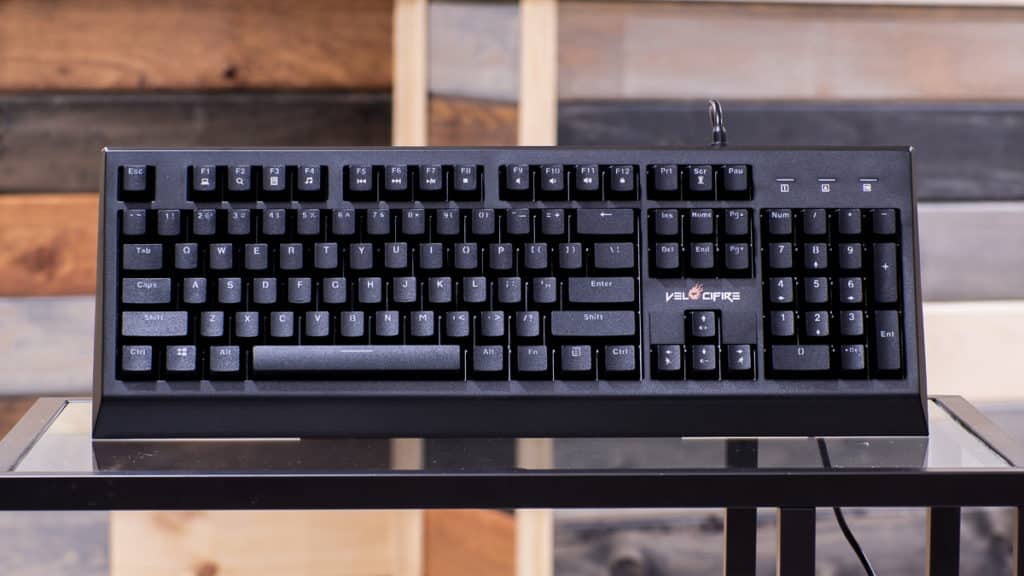Velocifire produces mechanical keyboards for the bargain basement sector of the keyboard market. While may cut corners in some places, their products exhibit a high level of quality and usability in comparison to other lower-priced mechanical keyboards. I’ve had the opportunity to review a few Velocifire mechanical keyboards in the past and have enjoyed them quite a bit. Most of their mechanical keyboards have a minimalist aesthetic that’s perfect for any gaming rig. We’re going to review the Velocifire VM01, the big sibling of the new TKL01.
Unboxing the Velocifire VM01
The Velocifire VM01 arrived in minimalist packaging, a typical trait in the company’s lineup. While some may scoff at the lack of fancy graphics, it’s a good thing overall. Less money spent on packaging typically indicates that more was spent on the product within.
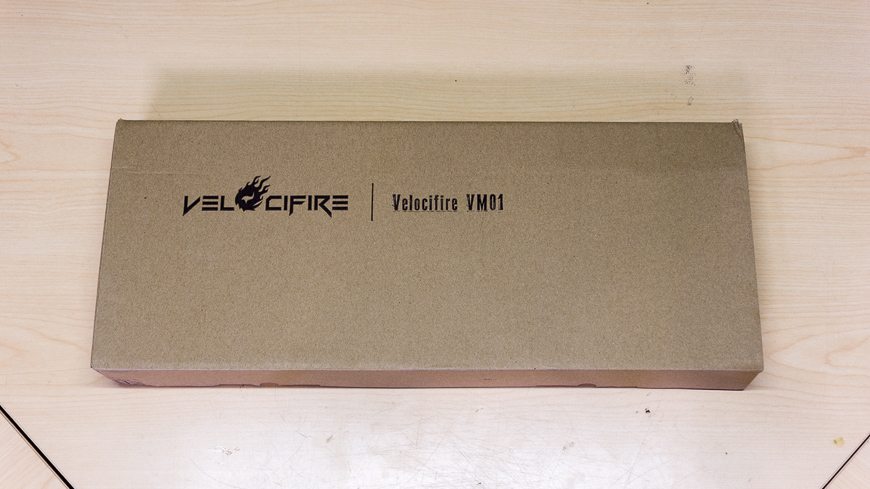
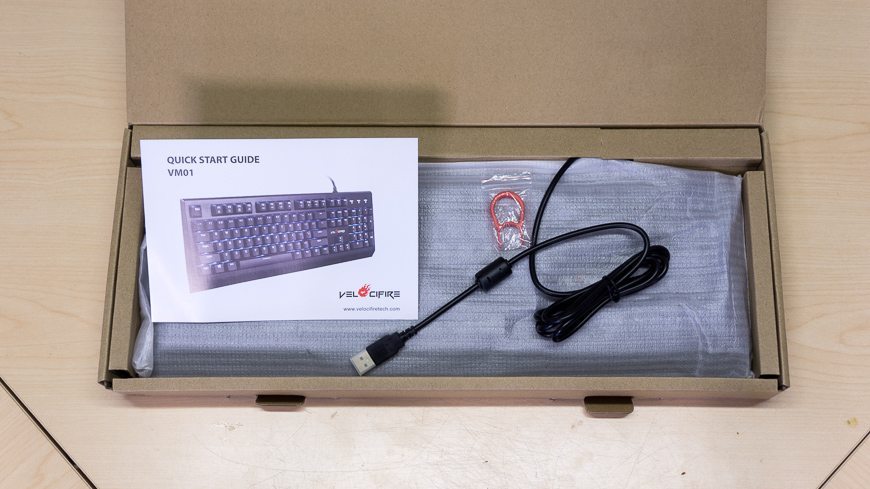
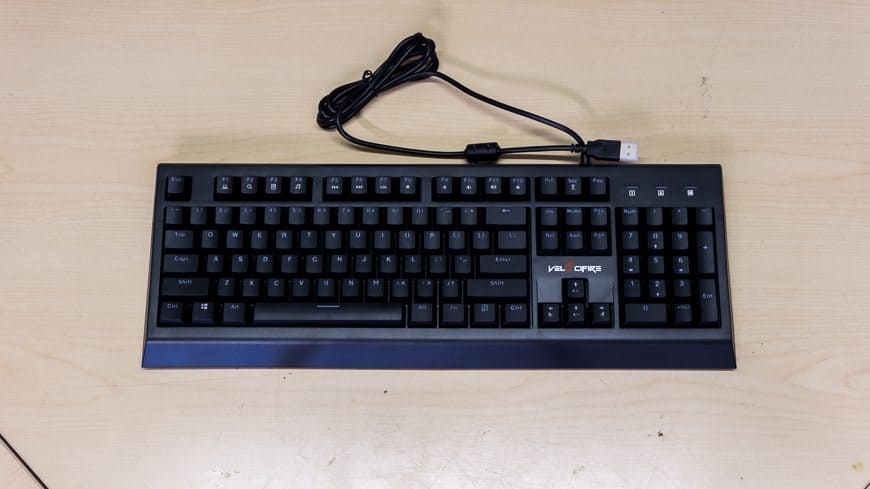
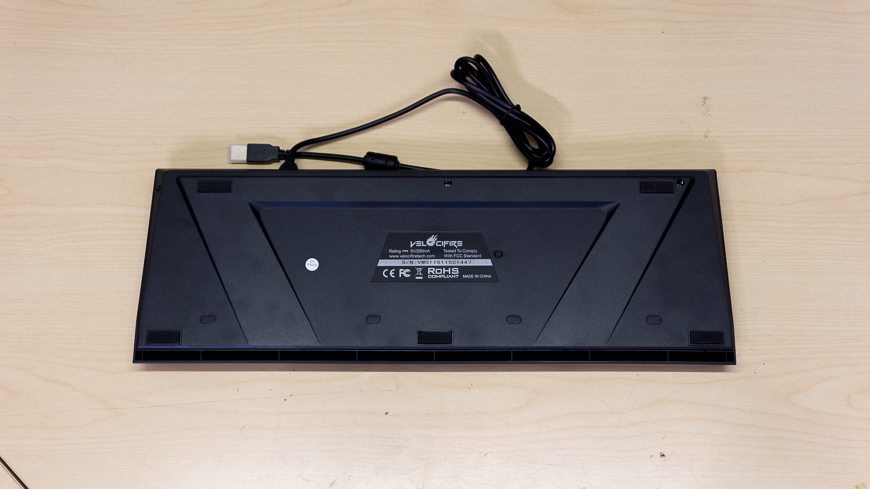
A foam sleeve helps protect the Velocifire VM01 mechanical keyboard. In addition, a plastic USB cap covers the end of the VM01’s cable. A card stock user manual, which is printed in color, contains the few instructions you’ll need to operate it. The package even includes a keycap puller in a discrete baggie, which is a nice touch in the uber-cheap mech market.
Build quality
The VM01 is designed to be a cheap keyboard that appeals to everyone. Its case is made from thick ABS plastic, which in some locations is close to 2mm thick. It is lightly textured and consistent in terms of finish. No warping or creak presented itself. Remember that this mechanical keyboard is quite hefty for a plastic model, weighing in at 2 pounds 10 ounces. That’s only 7 ounces more than the TKL01, which is surprising given the size difference between the two models. The VM01 shares a small dividing line between the lower and upper case but does a better job than the TKL01 with that portion’s finish. It’s textured.
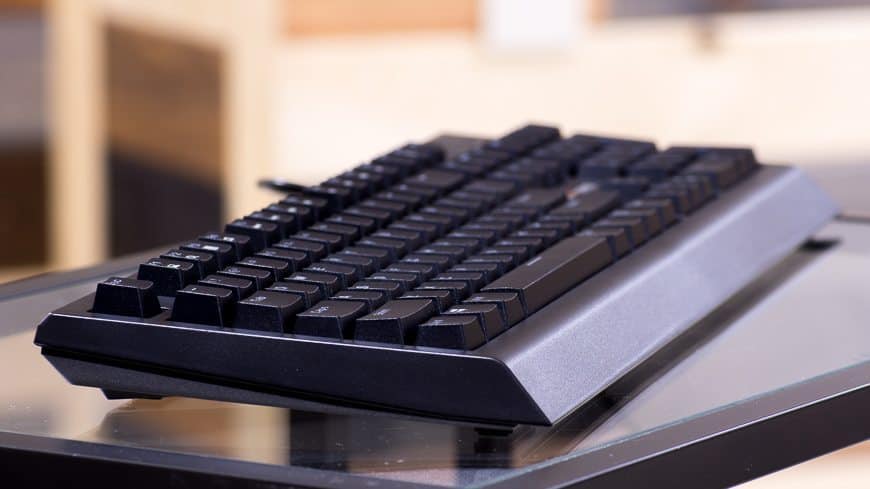
Large plastic clips secure the plate halves, while screws serve to provide greater stability. The screws themselves are fairly wimpy, but given the tanky nature of the case, it’s an understandable decision. Quality fasteners can be relatively expensive, especially if metal inserts are pressed into the case plastic, so they were probably a cost-cutting location. The plate and PCB are supported by a number of through-plate pegs and lateral supports. They do an excellent job of keeping things in place. Overall, the physical structure of the case is excellent.
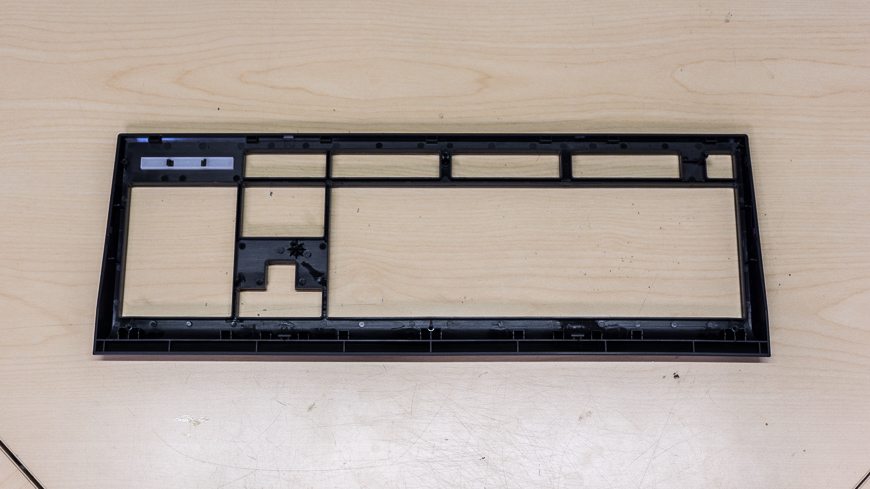
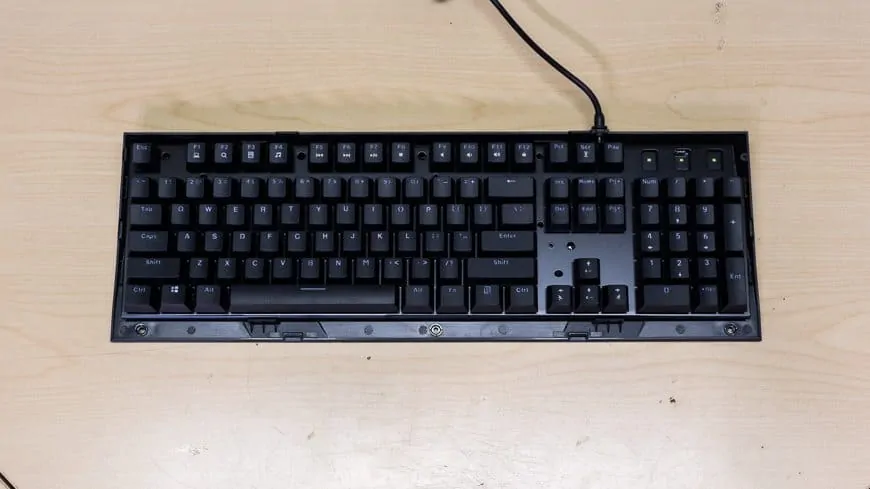
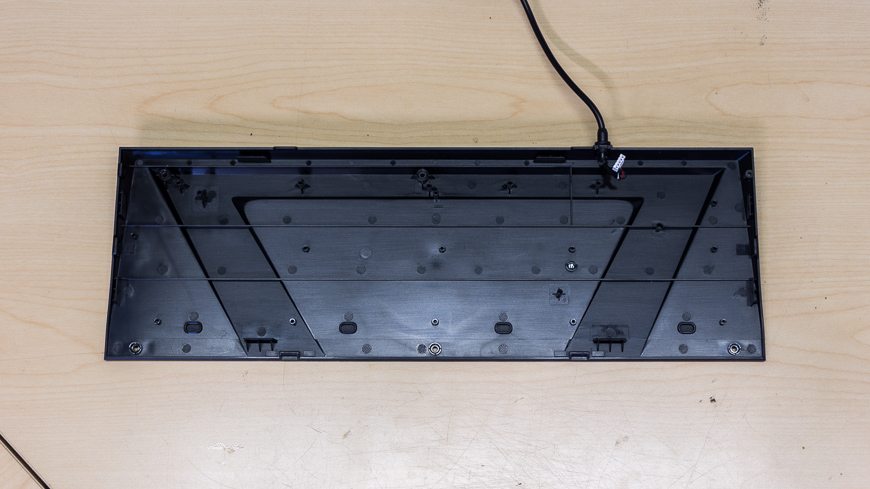
The Velocifire VM01 has a visually appealing black PCB, which you’ll probably never see. The PCB itself is pretty nice, but it must have been an off day for Velocifire’s wave soldering machine. A number of switches are hand-soldered to the keyboard with excessive amounts of flux, exhibiting some solder splatter. Not exactly a premium solder job. It seems odd that Velocifire chose to color a PCB that was hidden in the VM01 but neglected to implement that feature on their transparent T11, which is being sold for a similar price. They even chose to color the bottom of the TKL01’s PCB blue, whereas its top is yellow. Confusing, right?
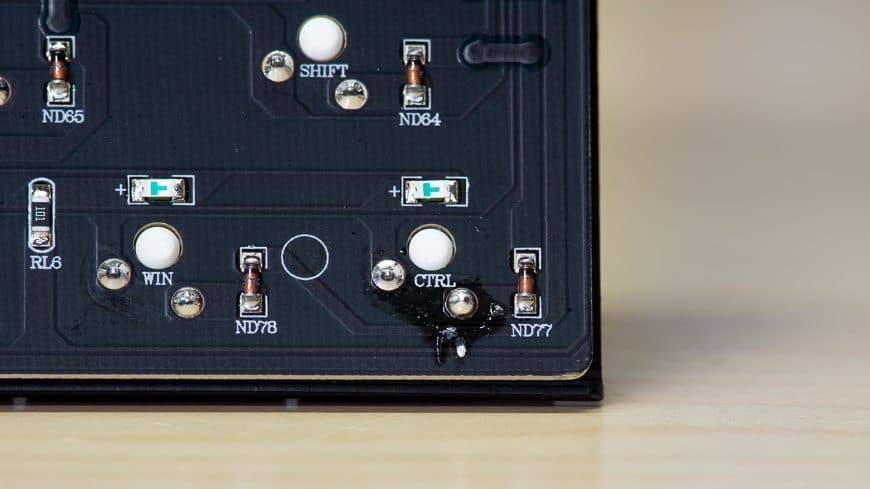
The VM01’s cable shares most of its features with the TKL01. A gold plated connector, ferrite, and reasonable strain relief give it points. It isn’t quite above average like the TKL01’s, though. The keyboard-side strain relief isn’t up to snuff when compared to its small counterpart. The ferrite and gold plating have no practical effect on the keyboard’s performance in everyday environments, but it’s nice to see them nonetheless.
A total of 5 untextured rubber feet keep the mechanical keyboard secure on the desk. That’s one less than I typically like to see, but they laid the pads out in a logical way so it isn’t problematic. What could be an issue for some users is the lack of flip out feet. In theory, it’s more ergonomic to keep your keyboard flat. In practice, many people enjoy a steep angle. If you’re one of the latter, the Velocifire VM01 probably isn’t for you. You could use other means to elevate it, but that would look goofy or require money — two things that shouldn’t be involved with mechanical keyboards, particularly when they’re cheap.
VM01 – Switches & stabilizers
Switches
Zorro Brown switches are inconsistent. The Velocifire TKL01 that GoMK reviewed must have used a particularly good batch, as its switches feel more consistent and smooth than the VM01 that I’m writing this review with. In any case, the switches have a light tactility and greater scratchiness than Cherry MX Browns. There’s also a sense of springiness — one can definitely feel a force increase near bottom out. That’s great for floating typists, but not so much for those of us who hammer keys all the way down.
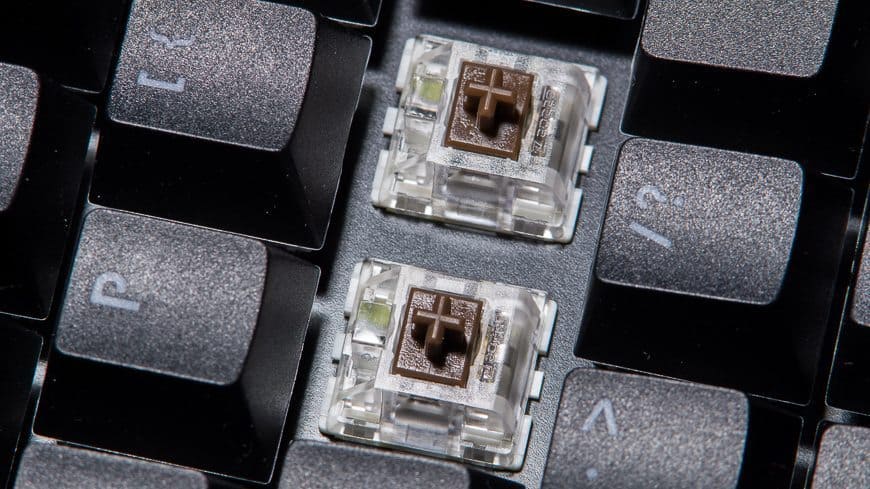
Certain switches produce metallic “scratching” noises that are just loud enough to be heard, which isn’t particularly pleasant. At this price point, I don’t think it’s a dealbreaker, but your opinion may differ from mine. It’s also worth mentioning the manufacturer’s rating: 55g +/- 15g doesn’t indicate tight tolerances, which could account for much of the inconsistency in the switches. Besides that potential 27% variation in weight, the switches sport chunky LED lenses. I’ll talk about those in a little bit.
Stabilizers
The stabilizers in the Velocifire VM01 are clones of Cherry versions. They’re slightly loose on the plate, but it doesn’t seem to make a difference in terms of feel. Unlike those in the TKL01, this batch of stabilizers doesn’t impact the switches’ feel in a positive way. I’d say it’s quite neutral. I don’t see any lubricant either, though a thin film could still be present. There isn’t much else to cover in the stabilizer department, so let’s move along.
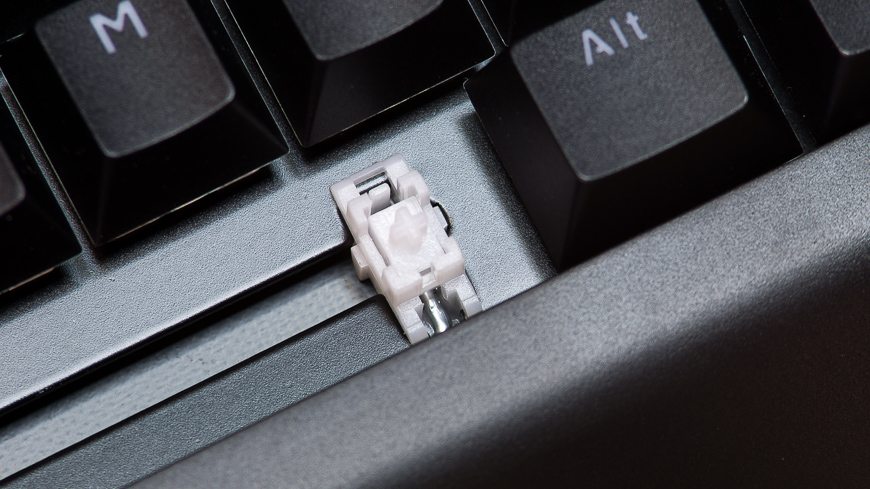
VM01 – Keycap quality
The VM01 features Velocifire’s typical medium-thick ABS double shot keycaps. Their font is refreshing, as it is less aggressive and modern than those found on other budget mechanical keyboards. They will shine over time, but that’s normal for ABS caps. The pad printing is slightly inconsistent, which is to be expected. I only have one additional complaint about these keycaps — they have a thin layer of translucent extruded plastic around their perimeter that is leftover from the injection molding process. It isn’t present on the other Velocifire keyboards I’ve reviewed, so it must be a quality control inconsistency. It’s quite likely that most people wouldn’t even notice the difference, so I’m not going to dock points for it.
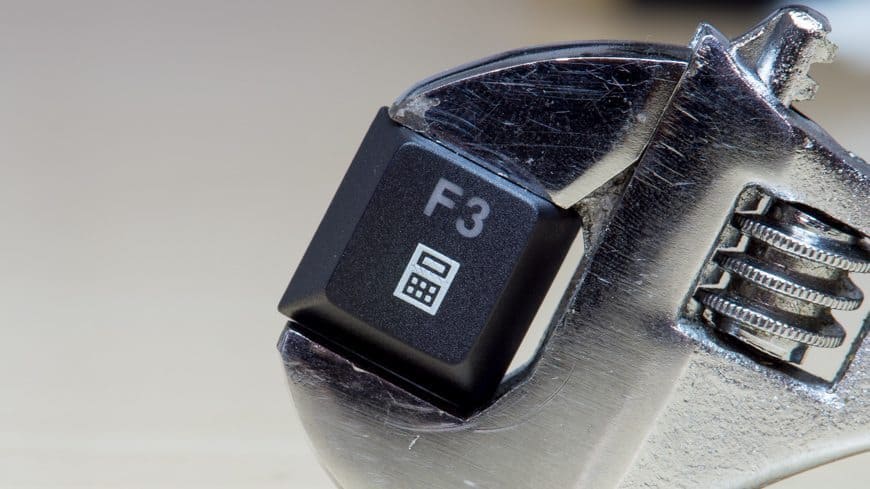
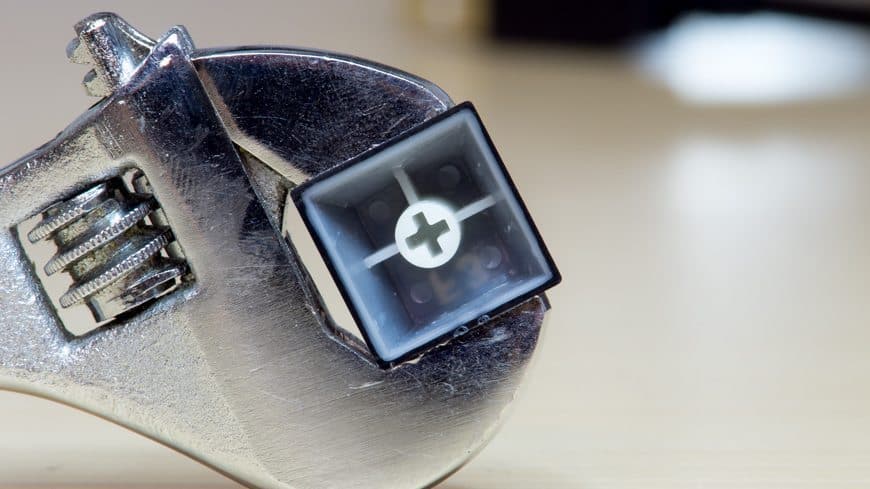
VM01 Mechanical Keyboard Features
LEDs
The VM01’s backlit teal LEDs are reasonably bright due to the switch lenses. There is a downside to the lenses, though. On wider keys, like shift, the LEDs are too focused. Only the center of the legend is bright, creating uneven light coverage. Leaving the lenses out would have resulted in slightly dimmer alphanumeric legends, but cost savings and even coverage would have made it worth consideration (especially if the savings were passed on to customers).
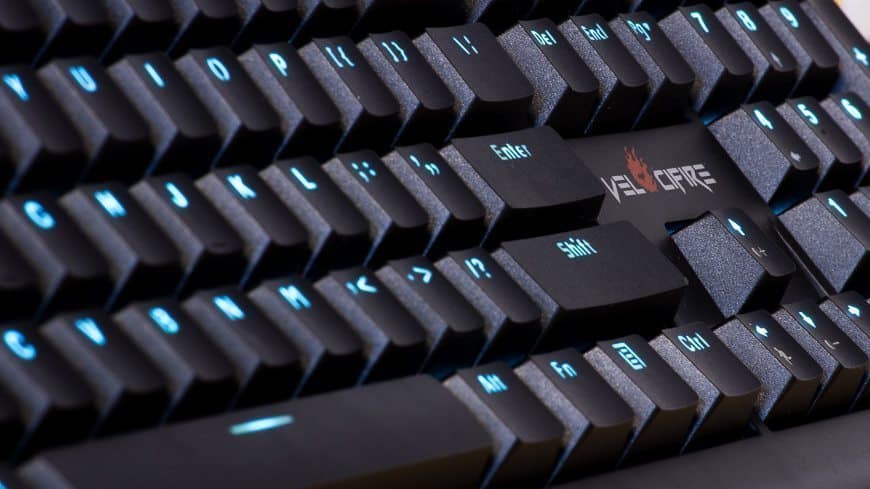
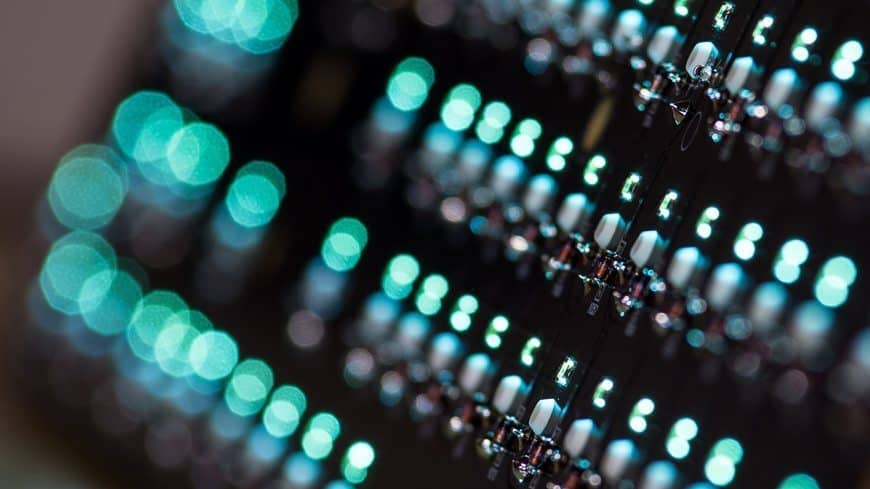
They have three settings: off, less bright, and bright. I typically like to see more adjustment steps, but at this price point, the limitation isn’t a surprise. Several lighting modes, many of which are just vertically mirrored versions of the originals, can add flavor to your experience. I typically leave the backlight set to its solid mode, as LED changes can be distracting. While I wanted to see some side lighting on the TKL01, I’m glad that this larger keyboard encloses its LEDs (which leak light from the bottom of the PCB). The final thing to note is that it may be difficult to match the VM01 keyboard’s teal lighting with RGB peripherals.
The Velocifire VM01 mechanical keyboard draws 190 mA with everything running full blast, which is well within USB 2.0 and 3.0 spec.
Spill-proofing
The Velocifire VM01 isn’t spill-proof at all, nor does it have any drains. The backlit LEDs shine through the PCB, so that means liquid could run down its back and cause shorts. Even so, it doesn’t cost much for a mechanical keyboard. If a sticky beverage spill happens, replace it. Water spills, so long as you unplug the keyboard quickly and let it dry, shouldn’t be too bad.
Macros & Fn layer
No macros are present on the Velocifire VM01. The shortcuts aren’t anything special either. Basic media and OS controls are present on the Fn layer. The only standout, even if it is pretty mundane, is the calculator shortcut. Calculator shortcuts in budget mechanical keyboards were dying out for a while due to gamer-centric design, at least in the keyboards that I’ve seen. There is also a Windows lock to prevent issues during gaming.
Velocifire also boasts that the VM01 has anti-ghosting, 104 keys, illuminated LEDs, and 12 multimedia controls. This is very common for most mechanical keyboards but its nice to know that Velocifire knows what they’re doing. Lastly, on Amazon, Velocifire states that the VM01 will last for 10+ years and has a 1 year warranty (as of this writing).
Labels & branding

The Velocifire logo is pasted on the case with standard pad printing. It isn’t particularly sharp or unique, though it does have nicely saturated red flames. The bottom label is plasticized, which means it will hold up to wipe downs with a wet rag. Or spills. Or scratches from being thrown about in backpacks.
The Velocifire VM01 – Editor’s opinion
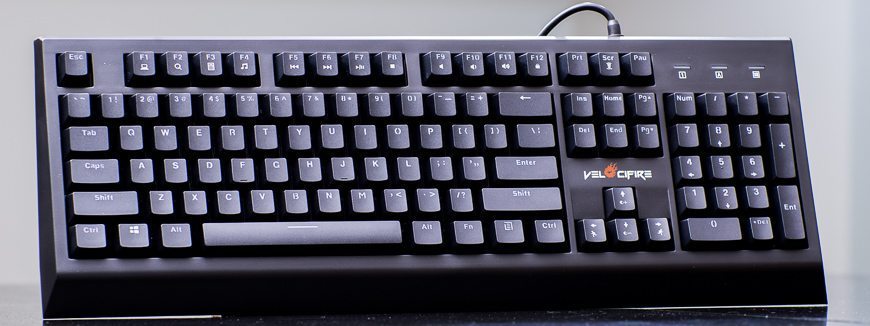
The Velocifire VM01 offers great value compared to other mechanical keyboards in its price bracket. That isn’t to say that it is a perfect keyboard. Its cons are relatively insignificant in most use cases, but they might be no-gos for some users. It isn’t quite as compelling as the smaller TKL01, but it is definitely one of the best options if you’re looking for a budget mechanical keyboard in a standard form factor.
It will work in the office, at home, or at LAN parties. The VM01 won’t complain about being thrown in backpacks or having its keys mashed after a frustrating gaming session. It won’t make your wallet cringe if it breaks and needs to be replaced either. That concludes my in-depth review of the Velocifire VM01! It’s a great mechanical keyboard for beginners or those just getting their gaming rigs setup. Leave a comment below if you’ve ever tried the VM01 out.
We rate mechanical keyboards on a 10 point scale. 10 is absolute perfection, 6 is average, and anything less is increasingly bad. The Velocifire VM01 scored a 6.9, which means it is a bit better than average.

